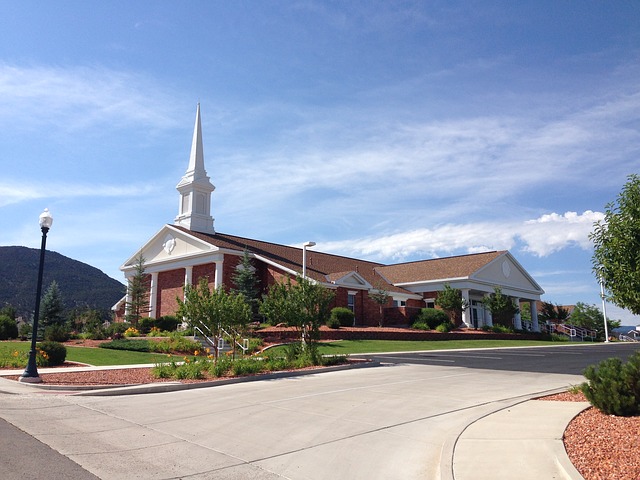Updated on July 5, 2022
The Rowland Factors were recently used by the California Supreme Court to provide landowners with a favorable ruling limiting their premises liability. In Vasilenko v. Grace Family Church (“Vasilenko”), the Court issued a bright line rule holding that landowners do not have a duty to assist invitees in crossing a public street when the landowner does no more than site and maintain a parking lot that requires invitees to cross the street to access the landowner’s premises. (Vasilenko v. Grace Family Church (2017) 3 Cal.5th 1077, 1081.) This rule applies so long as the street’s dangers are not obscured or magnified by some condition of the landowner’s premises or by some action taken by the landowner. (Id.)
In Vasilenko, a church visitor (the “Plaintiff”) sued the Church for negligence after the visitor was hit by a car while crossing a busy five-lane road from a staffed church parking lot to the church.
The Plaintiff contended that the Church owed him a duty of care to assist him in safely crossing the public street and that the Church was negligent in failing to do so. The Church, under Sexton v. Brooks, argued that it had no control over the public street and therefore did not owe the Plaintiff a duty to prevent his injury. (See Vasilenko v. Grace Family Church (2017) 3 Cal.5th 1077, 1081; Sexton v. Brooks (1952) 39 Cal.2d 153, 157–158.)
The Law on Negligence and The Rowland Factors
A plaintiff in a negligence suit must demonstrate “ ‘a legal duty to use due care, a breach of such legal duty, and the breach as the proximate or legal cause of the resulting injury.’ ” (Beacon Residential Community Assn. v. Skidmore, Owings & Merrill LLP (2014) 59 Cal.4th 568, 573.) The focus in Vasilenko was whether the Church owed a duty to the Plaintiff.
In creating the underlying bright line rule, the Court first established the law on duty:
Civil Code section 1714, subdivision (a) “establishes the general duty of each person to exercise, in his or her activities, reasonable care for the safety of others.” (Cabral, supra, 51 Cal.4th at p. 768, 122 Cal.Rptr.3d 313, 248 P.3d 1170.) “ ‘Courts … invoke[ ] the concept of duty to limit generally “the otherwise potentially infinite liability which would follow from every negligent act….” ’ ” (Bily v. Arthur Young & Co. (1992) 3 Cal.4th 370, 397, 11 Cal.Rptr.2d 51, 834 P.2d 745 (Bily ).) We have said that “in the absence of a statutory provision establishing an exception to the general rule of Civil Code section 1714, courts should create one only where ‘clearly supported by public policy.’ ” (Cabral, supra, 51 Cal.4th at p. 771, 122 Cal.Rptr.3d 313, 248 P.3d 1170, quoting Rowland v. Christian (1968) 69 Cal.2d 108, 112, 70 Cal.Rptr. 97, 443 P.2d 561 (Rowland ).) (Vasilenko v. Grace Family Church (2017) 3 Cal.5th 1077, 1083.)
Thus, courts look to public policy considerations when imposing duties outside of those provided by statute. (Vasilenko v. Grace Family Church (2017) 3 Cal.5th 1077, 1083.) Those public policy considerations are limited to the following Rowland Factors: (1) the foreseeability of harm to the plaintiff; (2) the degree of certainty that the plaintiff suffered injury; (3) the closeness of the connection between the defendant’s conduct and the injury suffered; (4) the moral blame attached to the defendant’s conduct; (5) the policy of preventing future harm; (6) the extent of the burden to the defendant and consequences to the community of imposing a duty to exercise care with resulting liability for breach; and (7) the availability, cost, and prevalence of insurance for the risk involved.” (Id.; See Rowland v. Christian (1968) 69 Cal.2d 108, 113.)
The Court’s Holding
After applying the Rowland Factors above, the Court decided “that two of the Rowland factors—foreseeability and certainty—weigh in favor of finding a duty, while four—closeness, preventing future harm, burden, and moral blame—weigh against duty, with the insurance factor weighing in neither direction.” (Vasilenko v. Grace Family Church (2017) 3 Cal.5th 1077, 1092.)
Thus, the Court held, “that a landowner who does no more than site and maintain a parking lot that requires invitees to cross a public street to reach the landowner’s premises does not owe a duty to protect those invitees from the obvious dangers of the public street.” (Id.) However, the Court was careful to distinguish its holding from those cases where “some condition of the premises obscured or magnified the risk of harm posed by the street, or that the landowner knows or should have known that its invitees include persons who may not appreciate the danger of the public street, such as unaccompanied children.” (Id.) That distinction was not decided by the Court.
To see if you qualify for a free 30-minute consultation regarding your matter contact Schorr Law today!
By Randy Aguirre, esq.
